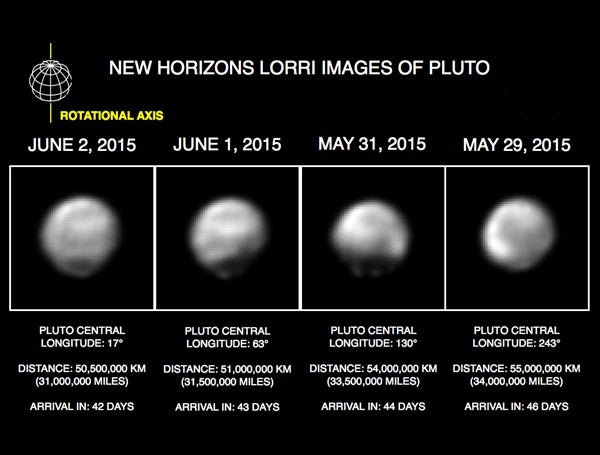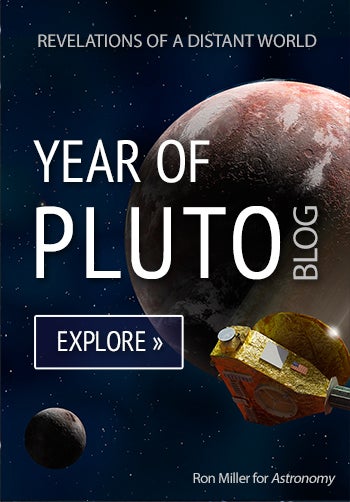A series of new images obtained by the spacecraft’s telescopic Long Range Reconnaissance Imager (LORRI) during May 29-June 2 show Pluto is a complex world with very bright and very dark terrain as well as areas of intermediate brightness in between. These images afford the best views ever obtained of the Pluto system.
New Horizons scientists used a technique called deconvolution to sharpen the raw, unprocessed pictures (you can find daily versions of the 100-millisecond exposures in the Approaching Pluto gallery) that the spacecraft beams back to Earth; the contrast in these latest images also has been stretched to bring out additional details. Deconvolution can occasionally produce artifacts, so the team will be carefully reviewing newer images taken from closer range to determine whether some of the tantalizing details seen in the images released today persist. Pluto’s nonspherical appearance in these images is not real; it results from a combination of the image-processing technique and Pluto’s large variations in surface brightness.
Since April, deconvolved images from New Horizons have allowed the science team to identify a wide variety of broad surface markings across Pluto, including the bright area at one pole that scientists believe is a polar cap.
“We’re squeezing as much information as we can out of these images and seeing details we’ve never seen before,” said New Horizons Project Scientists Hal Weaver from the Johns Hopkins University Applied Physics Laboratory in Laurel, Maryland. “We’ve seen evidence of light and dark spots in Hubble Space Telescope images and in previous New Horizons pictures, but these new images indicate an increasingly complex and nuanced surface. Now, we want to start to learn more about what these various surface units might be and what’s causing them. By early July, we will have spectroscopic data to help pinpoint that.”
New Horizons is approximately 2.9 billion miles (4.7 billion km) from Earth and just 20.4 million miles (32.9 million km) from Pluto. The spacecraft and payload are in good health and operating normally.











